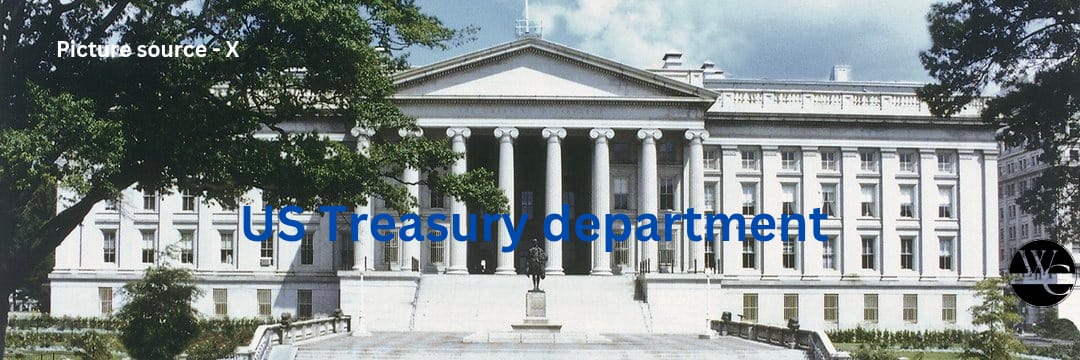As the US Treasury faces growing pressure in 2025, officials are preparing to implement a series of emergency measures to prevent the United States from breaching its debt ceiling. The debt limit has long been a contentious issue in American politics, but its significance has reached new heights as the nation’s fiscal challenges continue to mount. With concerns over the nation’s financial stability, lawmakers, economists, and global markets are watching closely as the Treasury’s actions could have far-reaching implications.
Understanding the Debt Ceiling and Its Implications
The US debt ceiling refers to the maximum amount of money that the government is legally allowed to borrow to meet its financial obligations. Once this limit is reached, the Treasury Department is no longer authorized to issue new debt, which could lead to a government shutdown or an inability to fund essential services such as Social Security payments, military salaries, or federal employee wages.
US Treasury Takes Urgent Measures to Prevent Debt Ceiling Breach in 2025
Currently, the US debt stands at over $31 trillion, and with a growing deficit, the issue of raising or suspending the debt limit has become an annual political battle. When the ceiling is reached, the Treasury has traditionally resorted to “extraordinary measures” to avoid a default. These measures include actions such as halting investments in federal retirement funds or temporarily suspending certain government accounts. These actions are designed to buy time for Congress to reach a deal on raising the debt limit or to extend it.
The Treasury’s Upcoming Measures
As of January 2025, the US Treasury has announced that it will soon begin implementing its extraordinary measures in an attempt to avoid breaching the debt limit. These measures are expected to last only a few months, buying time for lawmakers to negotiate a long-term solution to the debt ceiling crisis.
Treasury Secretary Janet Yellen has reiterated that the extraordinary measures are temporary and may not provide a permanent solution. However, they will allow the government to continue functioning until Congress reaches a resolution. The specifics of these measures include actions such as:
- Suspending investments in government retirement funds
- Delaying certain bond payments to free up cash
- Reductions in the issuance of new bonds or securities
- Shifting funds between accounts to ensure essential payments can still be made
These measures, while temporary, are critical for maintaining the stability of the U.S. financial system and avoiding a government default. A default on US debt would have severe consequences, not only for the American economy but for the global financial system, as US Treasury securities are widely regarded as one of the safest investments in the world.
Political Gridlock and the Debt Ceiling
One of the key challenges surrounding the debt ceiling debate is the political gridlock in Washington, D.C. In recent years, raising or suspending the debt ceiling has become a highly politicized issue, with lawmakers often using the debate as leverage to push for changes in fiscal policy or spending cuts. The two major political parties, the Republicans and Democrats, have long held opposing views on how to address the nation’s growing debt.
Republicans have generally advocated for reducing government spending and implementing fiscal reforms before agreeing to raise the debt ceiling. They argue that the U.S. cannot continue to borrow at an unsustainable rate, and any increase in the debt limit should be accompanied by spending cuts. On the other hand, Democrats have emphasized the importance of raising the debt limit without conditions, citing the need to ensure that the U.S. government can meet its obligations and avoid a default.
The stalemate between the two parties has led to repeated last-minute agreements, with lawmakers often waiting until the very last moment to take action. This constant uncertainty has created volatility in the financial markets, as investors worry about the possibility of a default. With the US economy still recovering from the effects of the COVID-19 pandemic, the potential for a debt ceiling crisis could have serious consequences for the nation’s economic growth and stability.
The Economic Impact of Breaching the Debt Ceiling
If the United States were to breach its debt ceiling and fail to meet its financial obligations, the consequences would be far-reaching. The most immediate impact would likely be a credit downgrade by major rating agencies like Standard & Poor’s or Moody’s. In 2011, the US credit rating was downgraded for the first time in history after a prolonged debt ceiling standoff, and many fear a repeat of that situation.
A credit downgrade would increase borrowing costs for the federal government, as investors would demand higher interest rates to compensate for the increased risk of lending to the U.S. This could lead to higher interest rates across the economy, including on mortgages, car loans, and student loans, which would burden American families.
Furthermore, a debt ceiling breach could trigger a global financial crisis. US Treasury bonds are a cornerstone of the global financial system, with many central banks and financial institutions holding large amounts of these securities as part of their reserves. A default on US debt would undermine confidence in the dollar and could lead to a shift away from the US dollar as the world’s reserve currency. This shift could destabilize financial markets and lead to a reduction in global trade.
The Global Consequences of a Default
The repercussions of the US breaching its debt limit would not be confined to domestic borders. As one of the largest economies in the world, the United States plays a pivotal role in global trade and finance. A default on US debt could cause chaos in international markets, affecting countries and investors worldwide.
- Currency markets: The US dollar is the dominant global reserve currency, and a default would erode confidence in the dollar. This could lead to a depreciation of the dollar, impacting international trade and the value of foreign currency reserves.
- Bond markets: A default would lead to a sell-off in US Treasury bonds, reducing their value. This could result in higher borrowing costs for countries and corporations that rely on US debt markets.
- Stock markets: The uncertainty caused by a debt ceiling crisis could lead to a decline in stock market values, as investors flee to safer assets.
How the US Treasury Plans to Navigate the Debt Limit
The Treasury’s upcoming measures are designed to prevent a default and to buy time for Congress to reach a resolution. These measures, while temporary, are critical for maintaining the US’s creditworthiness and avoiding a financial crisis. However, the long-term solution lies in lawmakers agreeing to raise or suspend the debt limit, which is expected to remain a key issue in the coming months.
In conclusion, while the US Treasury’s extraordinary measures will help stave off a breach of the debt limit in the short term, the ultimate solution will require bipartisan cooperation in Congress. Until that time, the threat of a debt ceiling crisis remains a critical issue for both the US economy and global financial markets. As we move further into 2025, all eyes will be on Washington to see if the government can avoid a crisis and secure a sustainable fiscal future.
What is the US debt ceiling?
The US debt ceiling is the maximum amount the government can borrow to meet its financial obligations.
What are extraordinary measures?
Extraordinary measures are temporary actions taken by the Treasury to avoid breaching the debt ceiling, like suspending investments.
What happens if the US breaches the debt ceiling?
Breaching the debt ceiling could lead to a government default, credit downgrade, and global financial instability.
Why is the debt ceiling a political issue?

The debt ceiling is politically contentious as parties disagree on raising it without accompanying fiscal reforms or spending cuts.
How do extraordinary measures impact the economy?
Extraordinary measures help prevent default but only provide short-term relief, maintaining government functions while delaying long-term solutions.

